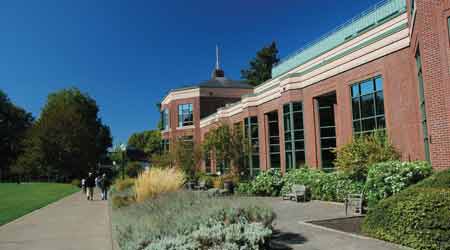Hardscapes: Earning LEED Points-Innovation and Design
Part three of a three part series on hardscape LEED Certification
Innovation in Design
In the Innovation in Design section of LEED v4, the goal of Credit 1 is to provide design teams and projects the opportunity to achieve exceptional performance above the requirements set by the rating system and to achieve innovative performance in green building categories not specifically addressed by LEED.
For instance, in the section’s exemplary performance contribution category, managers can consider hardscape components for help in key areas:
Site development. Managers can earn one point by having a larger percentage of a site undisturbed or restored than the original credit. SRWs, ACBs and paver units can help minimize site disturbance and restore erosion-prone areas.
Stormwater design. Using paver and ACB units can reduce and improve stormwater to increase the requirements in the original credits.
Heat island effect. Using high-albedo or open-grid paver units on non-roof impervious surfaces will yield an additional point.
Energy performance. Using concrete masonry walls strategically can help achieve the 50 percent energy efficiency level needed to get this additional point.
Construction waste. Crushing and reusing concrete masonry materials can help accomplish the 95 percent diversion from landfill threshold established for this credit.
Material reuse. Salvaging paver, ACB and SRW units can help achieve the 15 percent material reuse level.
Recycled material. A level of 30 percent recycled content level will yield one point.
To earn credits in the section’s Innovation contribution category, a design team must develop its own criteria and document the performance, and concrete masonry can contribute in one of several ways:
Durability. One obvious characteristic of concrete masonry is its durability and long life expectancy with minimal care, upkeep and maintenance. Each of these factors contributes to a building’s lasting beauty, comfort, convenience, and economy, and they return benefits to the environment.
Acoustics. While no sound level requirement exists in LEED for New Construction, a project team could develop an Innovation in Design credit by using IEQ Credit 9 in LEED for Schools as a guide and then take advantage of concrete masonry’s acoustical properties.
Mold inhibitor. Using the mold prevention credit in LEED for Schools, a project team could develop an Innovation in Design credit by capitalizing on concrete masonry’s natural ability to resist mold growth, since it is not a food source for mold.
The National Concrete Masonry Association — www.ncma.org — contributed information for this article.
Related Topics:














